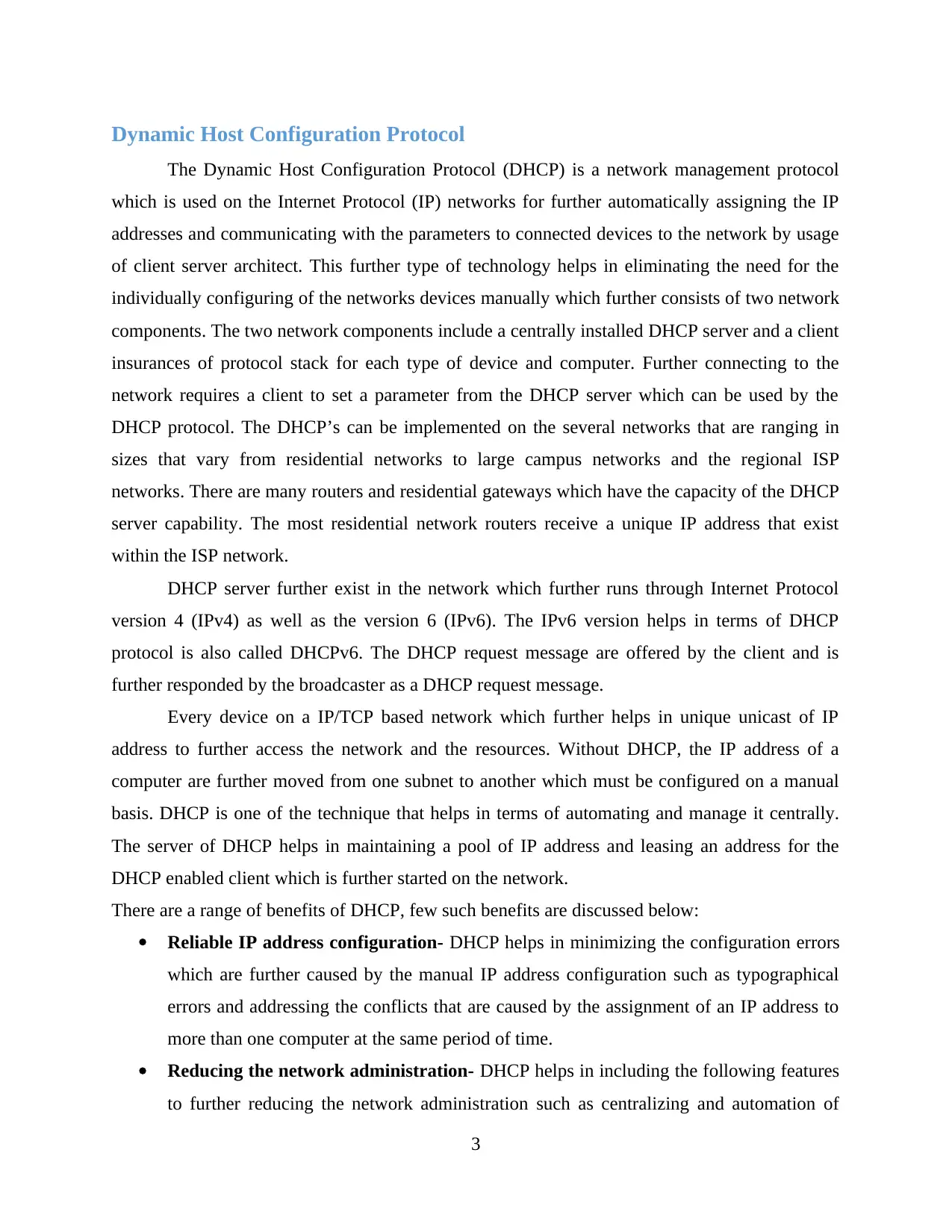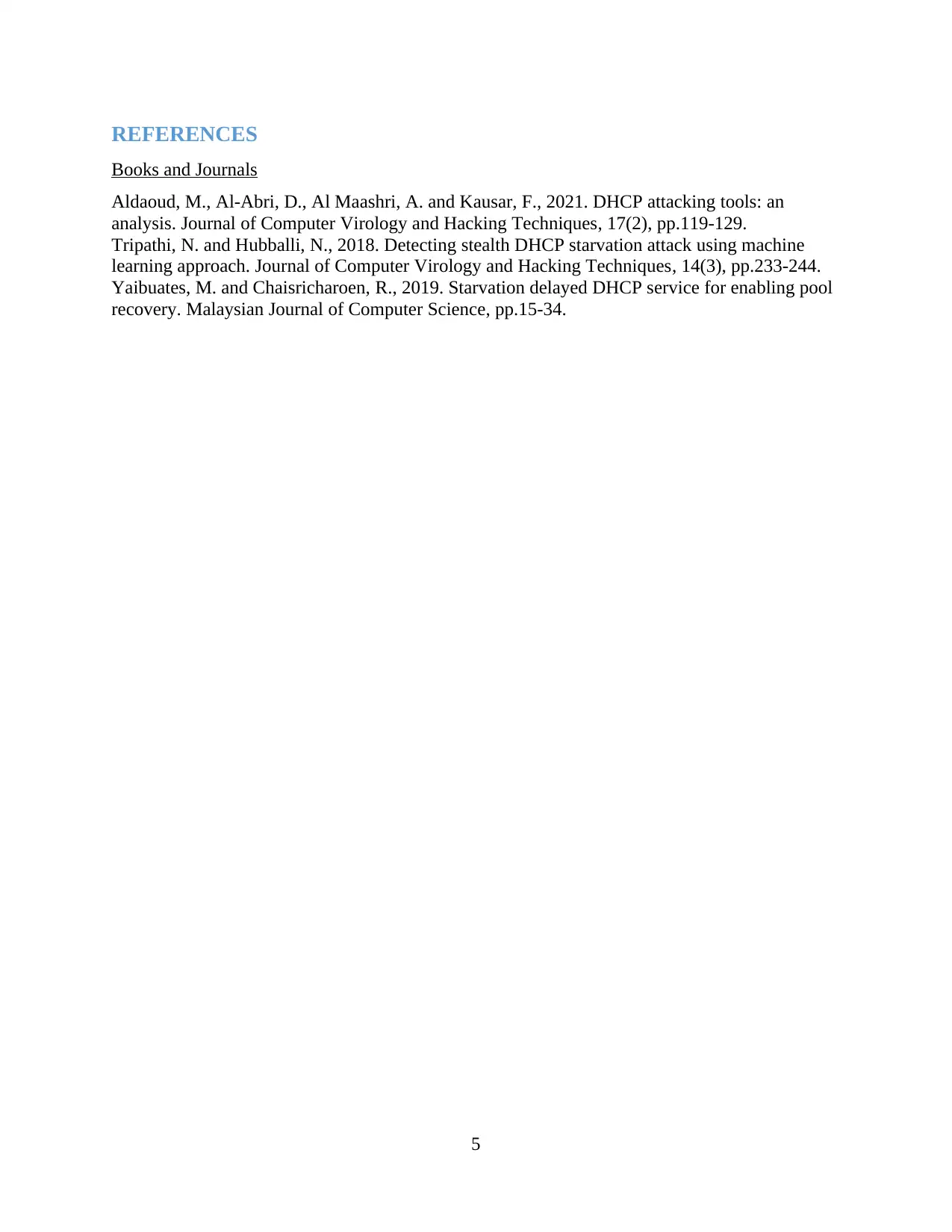Report on Dynamic Host Configuration Protocol (DHCP) Functionality
VerifiedAdded on 2023/06/11
|5
|670
|181
Report
AI Summary
This report provides an overview of the Dynamic Host Configuration Protocol (DHCP), a network management protocol used in IP networks to automatically assign IP addresses and communication parameters to connected devices using a client-server architecture. DHCP eliminates the need for manual configuration of network devices, utilizing a centrally installed DHCP server and client implementations on each device. The protocol is implemented on networks ranging from residential to large campus networks, with many routers having DHCP server capabilities. The report also discusses the benefits of DHCP, including reliable IP address configuration, reduction in network administration through centralization and automation, and efficient handling of IP address changes, concluding with a list of references used in compiling the information.
1 out of 5












![[object Object]](/_next/static/media/star-bottom.7253800d.svg)